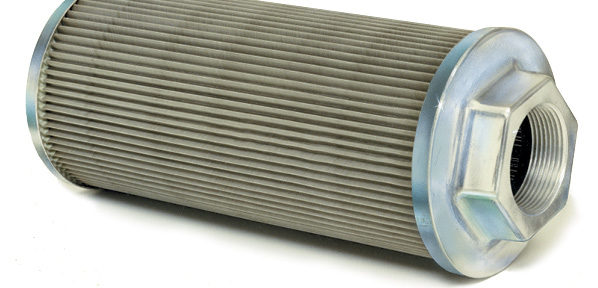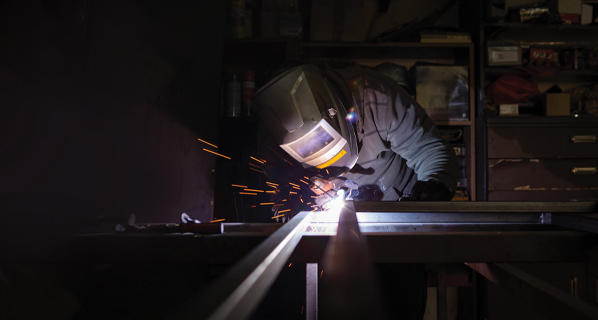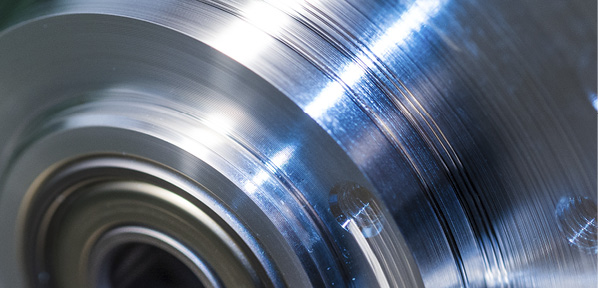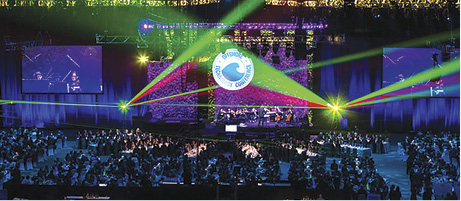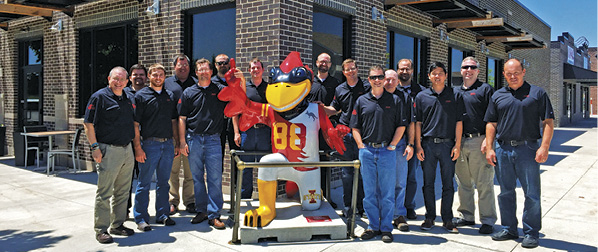Your Cylinder Doesn’t Get Enough Respect
By Brian Rooney, Professional Engineer and President, Westcoast Cylinders Inc.
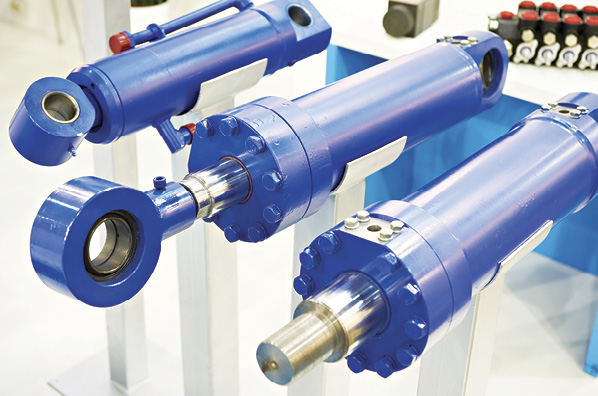
While multi-pump tank units and glass-enclosed control rooms get all the glory, the lowly cylinder is dutifully slaving away under a pile of debris turning fluid power into usable work. Improve your productivity by giving your cylinders some respect.
Premature cylinder wear and failure can come from many sources. From hostile operating conditions to contaminated fluid to mounting issues to rebuilds, cylinders take a silent beating. Excessive wear can also result from the original machine design or modifications to that original machine design.
However, the number one source of cylinder failure is incorrect mounting.
How does incorrect mounting show up? The main effect: side loading.
Cylinders are good at transmitting linear force, but are terrible at guiding machines. When cylinders are installed incorrectly, side load occurs as the cylinder is forced off its natural center relative to its mounting alignment. Side load can come from cylinder misalignment, cylinder binding due to mounting interference, and excessive unsupported rod extension.
Here are 5 reasons to remove side load on your cylinders:
1. Gland bushing wear
Side loads will cause gland bushing wear between the piston rod and gland bushing bore. The bushing is the softer material which will bear all of the wear as the rod has a hardened surface. Cylinders that are misaligned by as little as .010” to .015” will cause this wear to occur. In order to stay aligned with the connected machine, the cylinder rod must either bend to fit or wear the gland bushing to relieve the misalignment.

2. Rod wiper and seal wear
Side loads will cause rod wiper and seal wear. Once the gland bushing has enough radial clearance, the seal will also begin to leak. In addition, the rod wiper will wear away enough to allow dirt and debris into the cylinder, further wearing the rod and piston seals, leading to significant fluid loss and cylinder performance degradation. The seal is now unable to keep the working fluids contained.
3. Fluid control system contamination
Contamination that enters the cylinder will also enter the fluid control system. This happens for both hydraulic and air operations. Outside contaminants will mix with internal lubrication elements to form a pasty sludge that is difficult to purge from the cylinder and can end up in the valve system causing erratic performance and valve failure.
4. Misalignment of internal cushions
For hydraulic cylinders, worn glands can cause misalignment of the internal cushions which in turn will lead to the cushions colliding with the cushion bores in the heads. This ruins the cushion bore tolerance (which is essential for proper cushioning) and produces wear particles that will contaminate and destroy piston seals, barrels, and valve spools, and contaminate the return filters.
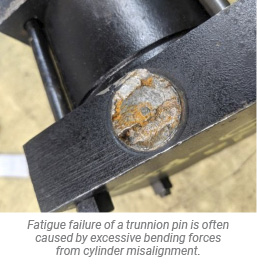 5. Misaligned trunnion-mounted cylinders
5. Misaligned trunnion-mounted cylinders
Trunnion-mounted cylinders are more prone to side load wear as they are only free to pivot in one plane. The trunnion pins rigidly hold the cylinder from moving side-to-side. Mounting these cylinders require precise alignment between the rod connection to the load and the centerline of the trunnions. Most heavy assemblies tied to trunnion-mounted cylinders have a lot of sideways free motion, especially if the mechanism has been running for a few years or if there is some distance between support bearings. Any lateral movement of the connected load will introduce high-bending stresses in the rod, gland, and trunnion pins. This will cause any or all of those areas to wear excessively and/or fail catastrophically. Some large and long loads can only be constrained at one end and must move to allow for thermal expansion. Depending on where the trunnion cylinder is attached, the trunnion-mounted cylinder may be in a bind every time the mechanism heats up.
How can you reduce side load damage to your cylinders?
- Sometimes side load cannot be avoided due to the nature of the application. Where possible, the side load should be isolated from the cylinder by way of an external linear bearing that can take the side load away from the cylinder.
- Side load effects on a rod can also be minimized if a piston stop is incorporated into the design. The gland bushing and the piston together resist the bending stress caused by the side load.
- When the cylinder is extending, the closer the piston is to the gland end head, the higher the radial forces on the piston and gland bushing. This force climbs exponentially as the piston gets near the gland end head. Imagine holding a pencil horizontally between your fingers at one end with your other hand pushing down on the other end. No amount of force on your fingers can stop the other end moving until you spread your fingers out. This is how the cylinders rod reacts.
As an example, a force of 100lbs applied at the end of a 36” stroke rod at full stroke can generate up to 900lbs of radial load on the gland bushing and piston. Adding an internal piston stop can drop this force by 50% or more. - When there are no other remedies available, the cylinder can be designed with an extended gland bushing and/or with the largest rod diameter possible in order to increase the bearing area of the gland. This reduces the wear pressure on the gland and will slow down the wear rate. The focus is to minimize the radial gland to rod pressure to reduce the rate of gland material removal.

Show your respect!
Whether you remove the side load conditions or modify the cylinder to better handle the conditions, the cylinder life will be extended which will reduce machine downtime, save wasted energy, stop environmental contamination, and reduce the cost and complexity of repair to the cylinder and its mounts. Show them some respect. They will pay you back!

